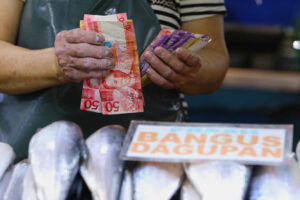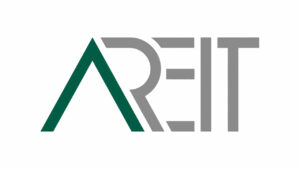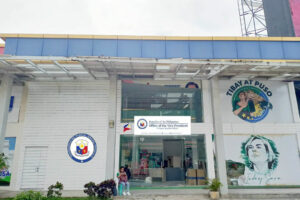Economists expect 75-bp rate hike in Nov. to keep up with Fed

A fish vendor counts his money at the Marikina Public Market. Inflation accelerated to 6.9% in September, as food and oil prices continued to rise. — PHILIPPINE STAR/ WALTER BOLLOZOS
THE PHILIPPINE central bank is increasingly likely to deliver another 75-basis-point (bp) rate increase in November, economists said.
China Banking Corp. Chief Economist Domini S. Velasquez said the Bangko Sentral ng Pilipinas (BSP), like most central banks, is under pressure to raise rates more than initially planned as the US Federal Reserve’s aggressive tightening is pushing down the currency against the US dollar.
“We think that given the higher-than-expected US CPI (consumer price index) pointing to continued aggressiveness of the Fed, Philippine CPI still expected to peak, and pressure on the exchange rate, the BSP might be forced to raise by 75 bps in its next meeting,” she said in a Viber message.
The Monetary Board has raised benchmark interest rates by a total of 225 bps so far this year.
The US Federal Reserve is widely expected to raise borrowing costs by another 75 bps at its Nov. 1-2 meeting, which will add to the cumulative 300 bps increase since March.
ING Bank N.V. Manila Senior Economist Nicholas Antonio T. Mapa said the Fed’s next move will play a “substantial part” in the BSP’s decisions.
“BSP will need to maintain a decent interest rate differential to ensure foreign exchange stability and in turn help provide price stability. Most importantly it should help re-anchor inflation expectations which is just as important in inflation targeting,” he added.
For the Monetary Board’s meeting on Nov. 17, Mr. Mapa said the BSP should deliver a 75-bp rate hike to maintain a comfortable interest rate differential with the US Federal Reserve.
BSP Governor Felipe M. Medalla on Saturday said the policy rate should be over 100 bps higher than the Fed’s rate “to have some form of exchange rate stability.”
The US federal funds rate is now at 3-3.25%, while the BSP’s benchmark rate is now at 4.25%.
“We are fighting inflation and in addition, the US battle against inflation is forcing the currency of the Philippines to depreciate so that we have to also raise the interest rates. So, there are two reasons (for higher policy rates) one is we have our own inflation problem, the other one is we are forced to respond to the policy rate of the (US) Fed. The Fed might raise its rates by two more 75s and one more 50,” he said.
The Philippine peso has significantly weakened against the US dollar this year, closing at its record-low finish of P59 on Monday. Year to date, the peso has depreciated by 15.68% or P8 from its P51 close on Dec. 31, 2021.
Inflation rose to 6.9% year on year in September, exceeding the central bank’s 2-4% target band for six straight months. The average inflation rate for the year so far is at 5.1%, below the BSP’s full-year forecast of 5.6%.
However, the BSP may still have to consider significant data releases next month, such as the third-quarter gross domestic product (GDP) data, Ms. Velasquez said.
The Philippine Statistics Authority is scheduled to release third-quarter GDP data on Nov. 10.
“A substantial slowdown in GDP growth might make them settle at a lower policy rate hike. We think the Fed’s decision and forward guidance in its November meeting and release of national accounts will be pivotal in the BSP’s November decision,” she said.
Rizal Commercial Banking Corp. Chief Economist Michael L. Ricafort said the economy is strong enough to support the BSP’s policy rate hikes.
“It is a delicate balancing act to stabilize both the peso and overall inflation, while ensuring sustainable economic recovery prospects from the pandemic that could also be weighed by higher inflation,” Mr. Ricafort said.
“(But) it is also about maintaining healthy interest rate differentials with the US amid aggressive Fed rate hikes recently that helped supported the stronger US dollar,” he said.
The economy expanded by 7.8% in the first half of 2022. Economic managers are targeting 6.5-7.5% GDP growth this year.
The central bank has two more policy settings scheduled this year — Nov. 17 and Dec. 15. — Keisha B. Ta-asan




